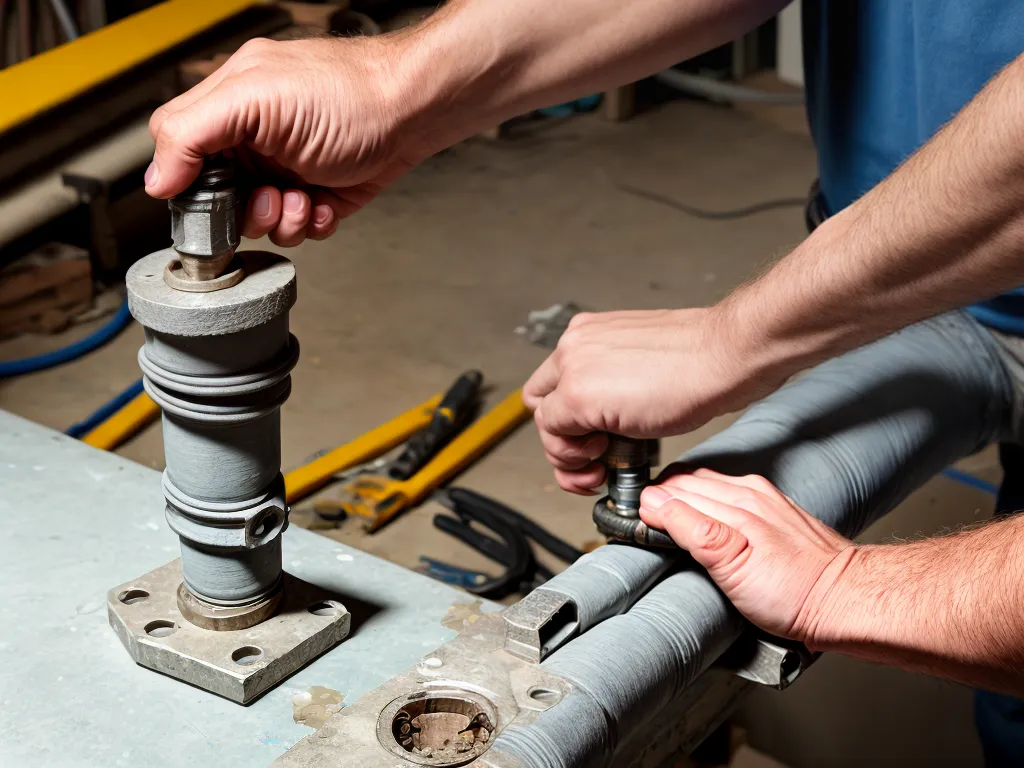
Bending conduit without damaging the wires inside is an essential skill for electricians. Following proper techniques and using the right tools will allow you to make smooth, consistent bends that protect the wiring. I have learned critical tips and methods to bend conduit successfully over my years as an electrician. In this comprehensive guide, I will walk through all the key steps you need to safely bend conduit without causing any issues.
Understanding Conduit and Potential Risks of Bending
Conduit is a tube or pipe used to protect electrical wiring. It shields the wires from damage and provides a pathway for running them through walls and ceilings. Conduit is typically made of a durable material like galvanized steel, aluminum, or PVC.
Bending conduit properly is crucial because it can be easy to kink or crush the wiring inside if you are not careful. Excessive bending or using too small of a radius can pinch the wires, which can lead to overheating and potential failures. Damaged insulation exposes the current-carrying conductors, increasing the chance of short circuits and shock hazards.
Therefore, learning how to bend conduit in a controlled way is a fundamental skill all electricians must develop. It requires careful planning, the right tools, and proper techniques to avoid binding, crimping, or flattening the wires.
Choosing the Right Conduit Bending Tools
Having the proper conduit bending tools makes the process much easier and minimizes risks. Here are the essential tools you need:
- Conduit bender - Either hand or electric powered. Allows you to bend conduits gradually and smoothly.
- Bend radius gauges - Determine the minimum bend radius for the conduit size.
- Tape measure - Measure lengths and mark bend locations.
- Pencil - Mark the conduit.
- Hacksaw - Cut conduit to length.
- Deburring tool - Smooth cut edges.
- Lubricant - Reduces friction when bending.
I recommend using high-quality benders and gauges designed specifically for conduit. Cheaper tools can be inaccurate and lead to poor results. Investing in the right equipment will make the process consistent and frustration-free.
Planning Your Bends
Carefully planning out the routing and each bend is essential before you start. Here are the key steps in the planning process:
- Review the conduit installation plans and diagrams.
- Verify the conduit sizing and wiring requirements.
- Determine the exact conduit path and measure distances.
- Identify the location and angle of each bend required.
- Consult bend radius tables for the conduit size.
- Mark the floor with chalk to map out the path and bends.
Thorough planning will help the installation go smoothly and prevent costly mistakes. Taking the time to measure and map out the conduit run is worth the effort.
Making Repeatable, Consistent Bends
The key to flawless bends is using the right techniques and keeping everything consistent:
- Mark the conduit with a pencil at the bend points.
- Place the conduit in the bender at the proper recorded angle.
- Align the bend mark on the conduit with the bend radius gauge.
- Apply pressure and bend slowly and steadily to the right angle.
- Bend the conduit a few degrees past the desired angle.
- Repeat the process exactly for additional bends.
Making each bend in small increments allows you to gradually bend the conduit without kinking or distorting it. Rushing through bends is where crushing and wire damage occurs. Taking it slow and following the proper steps will yield perfect bends every time.
Avoiding Common Bending Mistakes
It is important to be aware of some key mistakes to avoid:
- Bending past the minimum radius - Can pinch wires and distort conduit.
- Bending too quickly - Results in an uneven bend.
- Making uneven bends - Creates stress points and inconsistencies.
- Not deburring - Sharp edges can scrape wires.
- Not using lubricant - Causes excessive friction and strain.
- Overbending - Fatigues and weakens the conduit.
Following the proper procedures and using the tools correctly will help you steer clear of these errors. Rushing the process or taking shortcuts will almost certainly lead to problems.
Inspecting and Troubleshooting Bends
After completing a bend, be sure to inspect it thoroughly:
- Check for any flattened or distorted sections.
- Confirm the bend radius is consistent and smooth.
- Pull a wire or fish tape through to verify smooth operation.
- Make sure no sharp edges are present.
- Rework any problematic bends.
Troubleshooting issues as they arise prevents more serious problems down the line. It is much easier to re-bend a section before completing the entire run.
Thoroughly inspecting bends and correcting any mistakes will result in a professional, safe conduit installation. Taking the time to do it right will save you time and effort in the long run.
Maintaining Your Conduit Bending Tools
To keep your conduit bending tools in proper working order:
- Regularly lubricate moving parts.
- Inspect for any worn or damaged components.
- Replace bent or inaccurate bending gauges.
- Store tools properly when not in use.
- Clean equipment after use.
Well-maintained tools will produce accurate, consistent bends for years. Letting tools degrade will lead to frustration and poor results. Proper care of your equipment is essential.
Conclusion
Bending conduit without wire damage requires focused effort and the right techniques. Following the proper procedures, using quality tools, planning your run, and avoiding mistakes will allow you to safely install conduit that protects wiring. Patience and care will be rewarded with fast, professional results. With practice and experience, bending conduit neatly will become second nature.